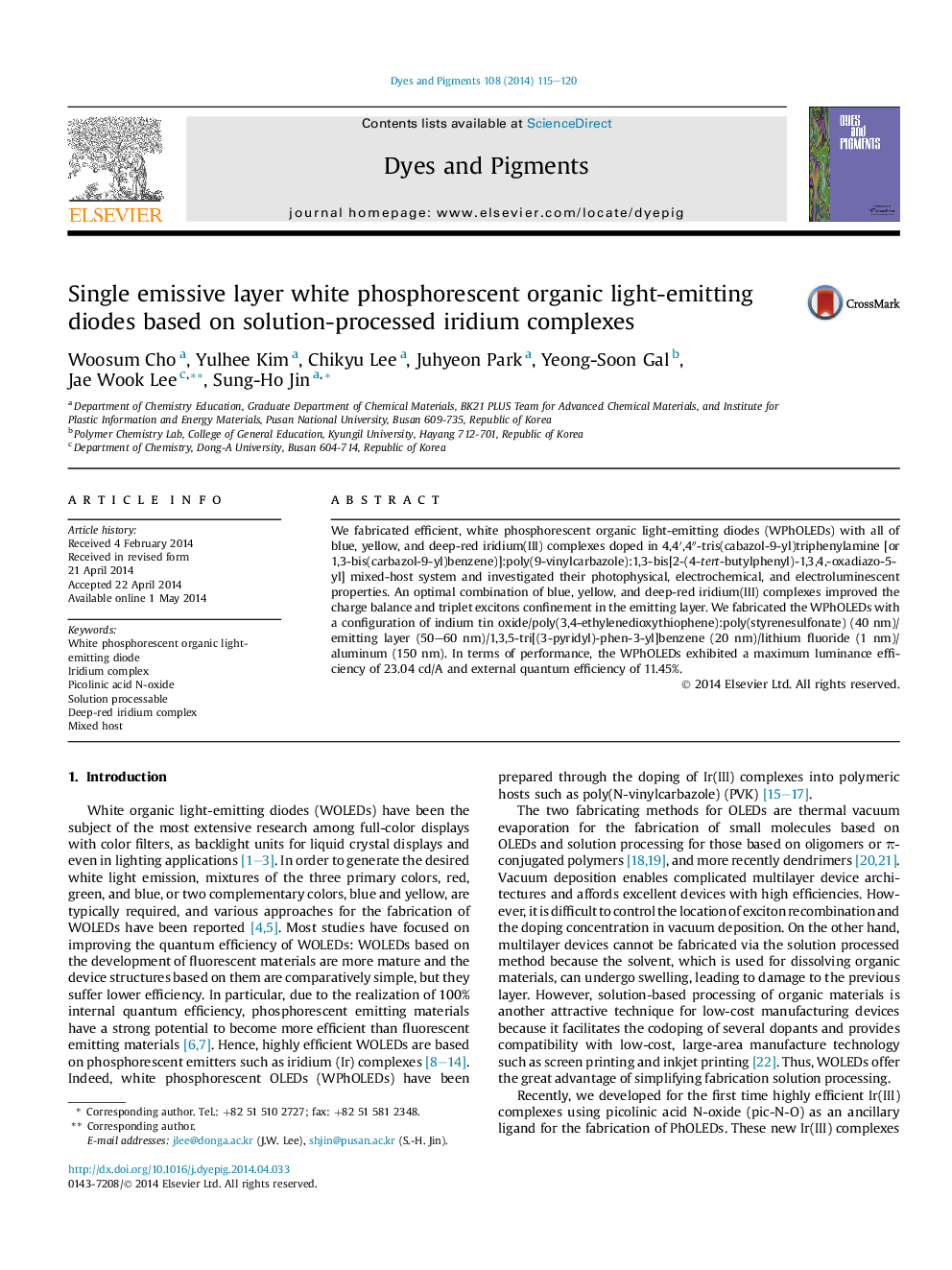| Article ID | Journal | Published Year | Pages | File Type |
|---|---|---|---|---|
| 176083 | Dyes and Pigments | 2014 | 6 Pages |
•We fabricated all-phosphor-doped WPhOLEDs based on blue, yellow, and deep-red Ir(III) complexes.•WPhOLEDs with the configuration of ITO/PEDOT:PSS/EML/TmPyPB/LiF/Al devices were fabricated.•WPhOLEDs exhibited the maximum EQE and LE were 11.45% and 23.04 cd/A.•WPhOLEDs exhibited the CIE coordinates of (0.326, 0.385).
We fabricated efficient, white phosphorescent organic light-emitting diodes (WPhOLEDs) with all of blue, yellow, and deep-red iridium(III) complexes doped in 4,4′,4″-tris(cabazol-9-yl)triphenylamine [or 1,3-bis(carbazol-9-yl)benzene)]:poly(9-vinylcarbazole):1,3-bis[2-(4-tert-butylphenyl)-1,3,4,-oxadiazo-5-yl] mixed-host system and investigated their photophysical, electrochemical, and electroluminescent properties. An optimal combination of blue, yellow, and deep-red iridium(III) complexes improved the charge balance and triplet excitons confinement in the emitting layer. We fabricated the WPhOLEDs with a configuration of indium tin oxide/poly(3,4-ethylenedioxythiophene):poly(styrenesulfonate) (40 nm)/emitting layer (50–60 nm)/1,3,5-tri[(3-pyridyl)-phen-3-yl]benzene (20 nm)/lithium fluoride (1 nm)/aluminum (150 nm). In terms of performance, the WPhOLEDs exhibited a maximum luminance efficiency of 23.04 cd/A and external quantum efficiency of 11.45%.
Graphical abstractThe WPhOLEDs were fabricated with a configuration of ITO/PEDOT:PSS/TCTA (or mCP):PVK:OXD-7:dopants/TmPyPB/LiF/Al. WPhOLEDs exhibited a maximum luminance efficiency of 23.04 cd/A and external quantum efficiency of 11.45% with CIE coordinates of (0.326, 0.385), which were close to the ideal CIE coordinates of (0.333, 0.333) for pure white light.Figure optionsDownload full-size imageDownload as PowerPoint slide
